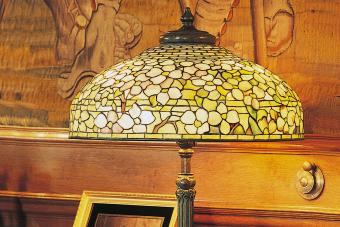
Some of the most popular and sought after early sports roadsters, also known as English racers, are vintage Raleigh bicycles.
The Early Years of the Raleigh Cycle Company
In 1887, Frank Bowden bought a bicycle on the recommendation of his physicians. So impressed with the bicycle, the wealthy businessman purchased the small bike shop, naming it the Raleigh Cycle Company, after the street in Nottingham, England, where it was located.
Within a decade, Mr. Bowden grew his company into the largest manufacturer of 3-speed, utility roadster bicycles worldwide. With the rapid growth, increased production and technical industry advances, the Raleigh Cycle Company showed 23 designs at the Stanley Cycle Show in 1890. In 1892, A.A. Zimmerman was riding a 24 pound radical laced wheel Raleigh bicycle when he became Road Cycling Champion of the World.
Several of the Raleigh Cycle Company's other early achievements and cycling innovations included:
- 1892 - The tubular fork crown
- 1896 - Cross frame
- 1899 - Back peddling brake and silent freewheel hub
- 1903 - Three speed hub under the name Sturmey-Archer
- 1923 - Racing frame without lugs
- 1925 - Rear fork end with quick release
- 1939 - Folding bicycle originally designed for World War II Paratroopers
- After the end of World War II, the Raleigh Cycle Company continued to be a leader in the bicycle industry with the introduction of rims compatible with caliper and pull-up brakes.
Raleigh 3-Speed Bicycles
Raleigh's 3-speed bicycles remained a popular mode of transportation from the 1930s into the 1970s. Although there were many different models of 3-speed bicycles, they all fall into one of three classes:
- Roadsters were built for durability, withstanding travel on cobblestone and dirt roads while needing little maintenance. These bikes were very popular in the English countryside. Instead of cables the braking system, called roller-lever brakes, used rods. Typically roadsters had:
-
- A 68 degree or less shallow frame angle
- Westwood rims
- 28 x 1/1/2 inch wheels
- Long wheelbases and cranks
- Gear case
- A chain completely enclosed by a chain guard
- Light roadsters, or sports bicycles, were generally the basic mode of transportation for the working class in English cities. Lighter and faster than the roadster, most sports bicycles featured:
-
- 26 x 1 3/8 wheels
- Patterned rims
- Cable brake system
- North Road style upright handlebars (the handlebars can be reversed, or inverted, and are then called Mustache handlebars)
- Full fenders made of steel
- 72 degree frame angle
- Deluxe models included options such as locking front forks, leather saddles with springs or Dynohub generators built into the hubs of the wheels
- Club bicycles were the cycle of choice for dedicated cycling club members. Generally these lightweight, high performance bicycles featured:
-
- 26 x 1/14 or 27 x 1/14 inch wheels
- Steel rims
- Frame tubing (Reynolds 531)
- Narrow leather saddle without springs
- Reversed, or inverted, North Road handlebars (Mustache handlebars)
- Rat trap pedals with toe clips
- A more refined Sturmey-Archer hub often with a very close ratio, or a reversible hub
- Derailers after the late 1950s
The Raleigh Chopper
Designed as a child's bike, the Chopper was Raleigh's answer to other manufacturers' muscle bikes, such as the Schwinn Sting-Ray. Marketed in the late 1960s, the Raleigh Chopper featured:- Long padded seat
- Backrest
- High rise handlebars (sometimes called ape hangers)
- 16 inch front wheel and 20 inch rear wheel
- 3-speed Sturmey-Archer gear hub
- Gear lever mounted on the frame
- Short fenders
There were several versions of the full size Chopper as well as smaller versions.
Full Size Models
- Mk 1
- Glider Fastback 100
- Mk 2
- The Sprint
- The Rodeo
- Mk 3 (2004)
Smaller Versions
- Chipper
- Budgie
- Tomahawk
- Chippy
Resources for Vintage Raleigh Bicycles
- Retro Raleighs
- Old Roads
- Sheldon Brown is a comprehensive resource for information on Raleigh bicycles. The website includes:
-
- Information on dating Raleigh 3-speeds
- Charts and timelines with equipment changes through the years
- A glossary
- Links to additional information on Raleigh bicycles, Sturmey -Archer hubs and more







